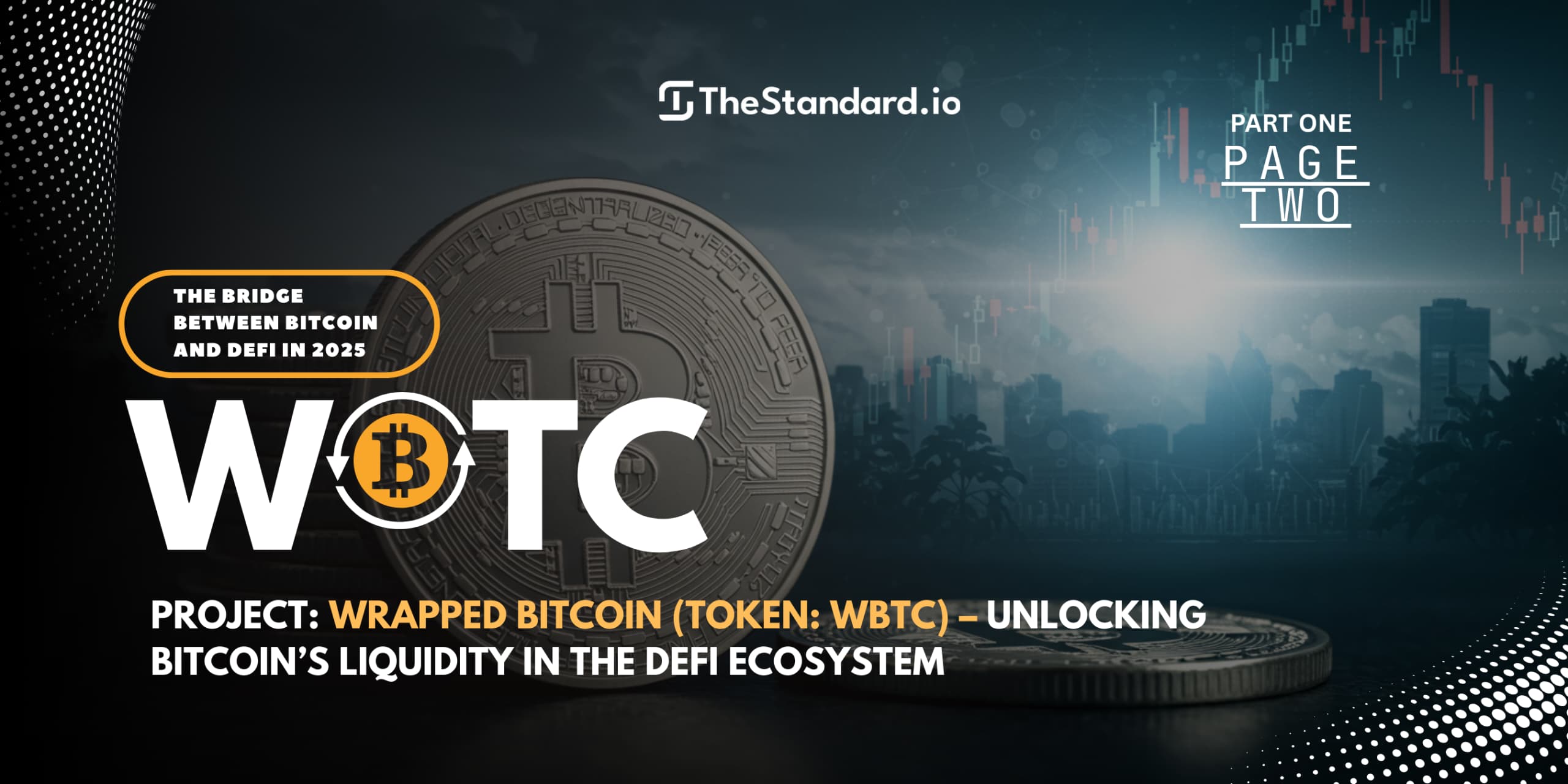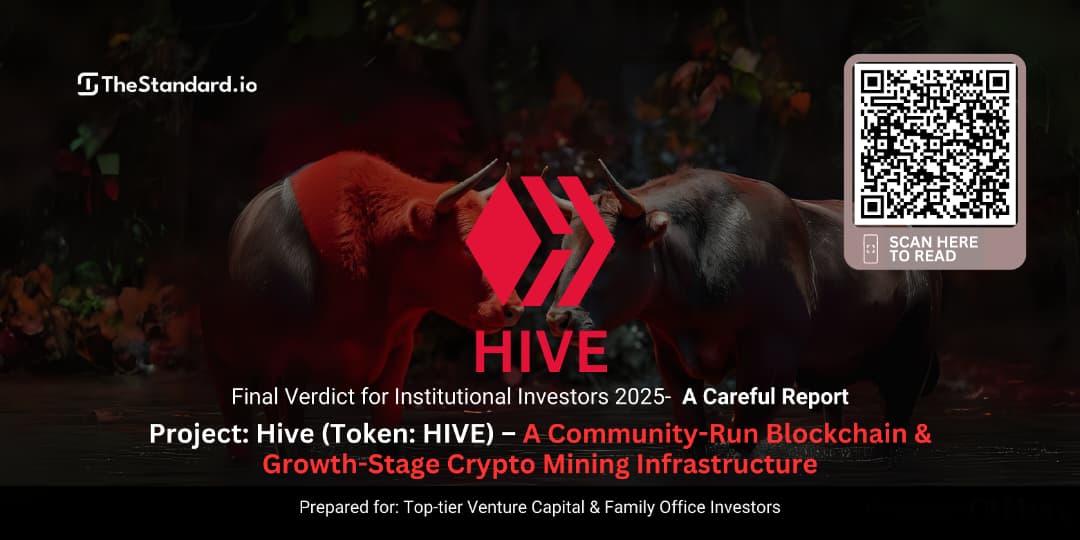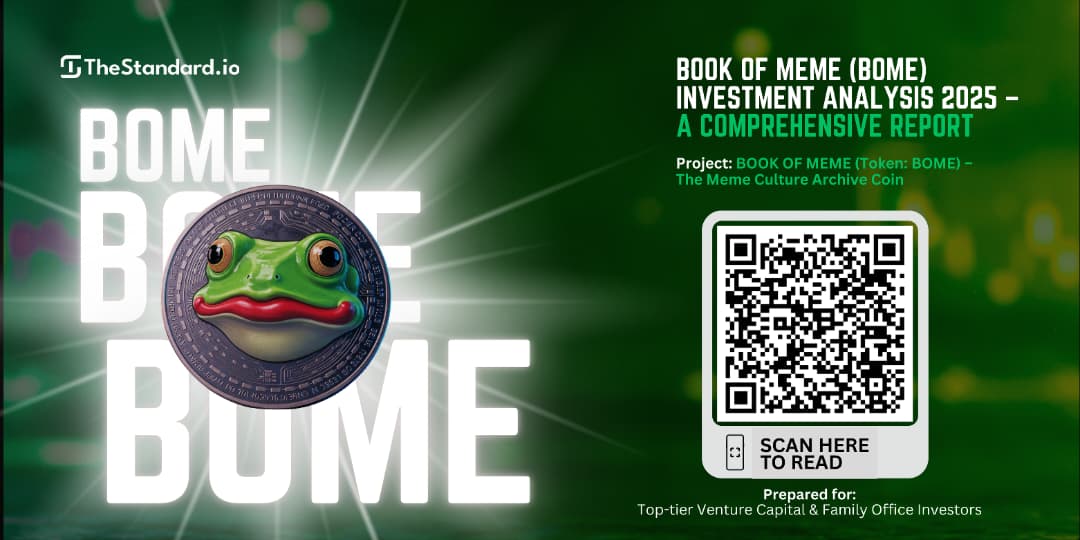Wrapped Bitcoin (WBTC): The Bridge Between Bitcoin and DeFi in 2025

Part 1 / Page 2
Technological Advantages: Key Technological Innovations that Provide a Competitive Edge
WBTC’s technological innovations primarily lie in its ability to bring Bitcoin into the Ethereum ecosystem while maintaining the 1:1 Bitcoin backing. Here are key technological advantages that give WBTC a competitive edge:
- Custodial Token Model with Transparency: Unlike other tokenized assets that may have opaque backing mechanisms, WBTC operates as a fully custodial token. Each WBTC token is backed by one Bitcoin held in reserve by BitGo, ensuring transparency and verifiability. BitGo’s custodianship also ensures that the Bitcoin backing the WBTC tokens is stored securely, reducing the risk of loss or theft. Furthermore, the WBTC network conducts regular third-party audits to ensure that the total supply of WBTC matches the amount of Bitcoin held in custody (BitGo).
- Interoperability with Ethereum-Based DeFi Protocols: WBTC leverages Ethereum’s ERC-20 token standard, which ensures that it is compatible with a wide range of decentralized applications (dApps) and smart contracts within the Ethereum ecosystem. This interoperability is essential for Bitcoin holders who wish to participate in DeFi without needing to convert their Bitcoin to Ethereum. Moreover, WBTC supports cross-chain interoperability, enabling Bitcoin liquidity to flow between Ethereum and other blockchain networks with the necessary infrastructure (Kyber Network).
- Ethereum’s Smart Contract Capability: By utilizing Ethereum’s established and robust smart contract capabilities, WBTC enables Bitcoin to participate in advanced financial operations such as staking, lending, and liquidity provision, which are central to the DeFi ecosystem. Ethereum’s Proof-of-Stake (PoS) consensus mechanism, as part of its transition to Ethereum 2.0, offers enhanced scalability and transaction efficiency, benefiting platforms like WBTC that rely on Ethereum’s network to process transactions (Ethereum Foundation).
- Security and Audibility: WBTC’s transparency, bolstered by regular audits, offers a level of security and trust that is difficult to achieve in many decentralized systems. WBTC holders and DeFi participants can verify the amount of Bitcoin backing each WBTC token through publicly accessible on-chain data, ensuring that the token is fully backed and secure. This transparency is critical for institutional investors and users who are cautious about the risks associated with centralized custodianship (WBTC Network).
Tokenomics: How the Token's Utility Incentivizes Platform Growth
WBTC’s tokenomics are designed to align with the broader goals of expanding Bitcoin’s use in Ethereum-based DeFi platforms. The token itself is primarily used as a vehicle for liquidity within decentralized financial systems. Here's a breakdown of WBTC’s tokenomics and its impact on platform growth:
- 1:1 Backing and Stability: The core feature of WBTC is its 1:1 backing by Bitcoin, which provides a stable store of value for Bitcoin holders. Each WBTC is fully backed by one Bitcoin, which means that users are not exposed to the volatility often associated with other tokens. This stability makes WBTC an attractive asset for users in DeFi who wish to maintain exposure to Bitcoin without experiencing the volatility of the broader crypto markets.
- Participation in DeFi: The utility of WBTC lies in its ability to enable Bitcoin holders to earn yield, provide liquidity, and participate in decentralized exchanges, lending protocols, and other DeFi activities. By locking Bitcoin into Ethereum-based platforms via WBTC, users can earn interest, participate in liquidity pools, and gain exposure to decentralized financial products, which further incentivizes the growth of the platform as more Bitcoin liquidity enters the ecosystem (DeFi Pulse).
- Incentive for Bitcoin Liquidity Providers: Liquidity providers who use WBTC in Ethereum-based DeFi platforms are rewarded through transaction fees, staking rewards, and other incentives provided by the platforms that use WBTC. This incentivizes the flow of Bitcoin into Ethereum’s DeFi space and encourages more liquidity providers to stake or lend their assets to generate returns. As more users enter the WBTC ecosystem, its value proposition strengthens, increasing its overall utility in the DeFi market (Aave).
Early Traction: Metrics and Data Showcasing Platform Success
WBTC has demonstrated strong early traction within the DeFi ecosystem. The token has consistently been one of the top assets in terms of total value locked (TVL) in Ethereum-based DeFi protocols. As of early 2023, WBTC has been integrated into a variety of leading platforms such as Uniswap, Aave, Compound, and MakerDAO, where it is used for lending, borrowing, staking, and liquidity provision (DeFi Pulse).
As of 2023, over $4 billion in WBTC is locked in DeFi protocols, a clear indication of its importance and growing adoption. This figure is expected to increase as more users and developers recognize the value of tokenizing Bitcoin for use in Ethereum-based platforms. The strong integration of WBTC with major decentralized applications ensures that it will continue to play a critical role in the growth of the DeFi sector.
Moreover, WBTC’s adoption extends beyond DeFi into the broader ecosystem, where the token is used as collateral in various lending protocols and a means of accessing decentralized financial services. This highlights the early success of WBTC in fulfilling its mission of bridging Bitcoin and Ethereum.
Team Capabilities: Founders and Team Expertise
The team behind Wrapped Bitcoin includes some of the most respected names in the cryptocurrency and blockchain industries. BitGo, the primary custodian behind WBTC, is a regulated digital asset custodian with years of experience in securing digital assets (BitGo Website). Kyber Network and Ren, the other collaborators in the WBTC project, bring their expertise in decentralized liquidity and cross-chain interoperability, respectively. Their combined experience in blockchain infrastructure, tokenization, and DeFi has been crucial in the development and success of WBTC.
The WBTC project is governed by a decentralized autonomous organization (DAO), where key decisions are made collectively by the project’s contributors and stakeholders. This decentralized approach helps ensure that the token evolves in a way that aligns with the needs of the broader DeFi community, rather than being controlled by a central entity.
Summary of Key Investment Highlights
In summary, Wrapped Bitcoin (WBTC) represents a key innovation in the cryptocurrency market by enabling Bitcoin to interact with Ethereum-based decentralized finance (DeFi) applications. WBTC’s market potential is vast, with significant growth expected in the coming years as the DeFi sector continues to mature. The technological advantages of WBTC, including its custodial model, transparency, and Ethereum interoperability, provide it with a strong competitive edge. Additionally, the tokenomics and early traction shown by WBTC in terms of liquidity and adoption highlight its success and further underscore its role in bridging Bitcoin and Ethereum ecosystems.
Investors looking to participate in the evolving DeFi space should consider WBTC as a solid investment option, with growing demand for Bitcoin liquidity in decentralized platforms. The project’s team capabilities, combined with the backing of reputable industry players like BitGo, Kyber Network, and Ren, positions WBTC as a significant player in the DeFi ecosystem.
1C. Key Risks and Challenges
Technological Risks: Are There Any Technical Risks Associated with the Platform’s Architecture, Scalability, or Security?
Despite its success, Wrapped Bitcoin (WBTC) is not without its risks, particularly in terms of its technological architecture. As a custodial token, WBTC depends on third-party custodians, primarily BitGo, to ensure the 1:1 backing of Bitcoin. Any failure or breach in BitGo’s custodial system could lead to a loss of Bitcoin, impacting the value and trust in WBTC. In this context, the security of the custodian is paramount. While BitGo has a strong reputation in the digital asset space, custodial systems are inherently vulnerable to hacking attempts or mismanagement of funds (BitGo Blog).
Additionally, as WBTC relies on Ethereum's blockchain, it is subject to the same scalability challenges that affect Ethereum. Although Ethereum 2.0 and Layer 2 scaling solutions like Optimism and Arbitrum are expected to address scalability issues, WBTC transactions still depend on Ethereum’s network performance. High congestion on the Ethereum network could lead to increased transaction fees and slower transaction speeds, negatively affecting user experience and liquidity movement within DeFi protocols that rely on WBTC (Ethereum Foundation).
Further, while Ethereum's transition to Proof-of-Stake (PoS) is designed to improve scalability, its long-term success depends on the widespread adoption of Ethereum 2.0. Any issues or delays in the network’s upgrade could impact the efficiency of the WBTC ecosystem and the broader DeFi space (CoinDesk).
Market Volatility: How Exposed is the Project to Cryptocurrency Market Swings, and How Could This Impact Valuation?
WBTC’s value is directly tied to the price of Bitcoin, which is known for its high volatility. While Bitcoin’s long-term trajectory remains bullish, short-term fluctuations are common and can have a substantial impact on the value of WBTC. Given that WBTC mirrors the price of Bitcoin, any sharp decline in Bitcoin’s price would directly lead to a decrease in the value of WBTC.
Moreover, since WBTC is primarily used in DeFi applications, its liquidity can be highly sensitive to changes in the broader cryptocurrency market. For example, during market downturns, the demand for DeFi services may decrease, reducing the overall liquidity within DeFi platforms that utilize WBTC. As a result, the market capitalization and adoption rate of WBTC could face short-term pressure during times of market volatility (CoinTelegraph).
Regulatory Challenges: What Regulatory Issues Could the Project Face, Including the Risks of New Laws or Restrictions?
One of the most significant risks for Wrapped Bitcoin (WBTC) lies in the regulatory uncertainty surrounding cryptocurrencies and tokenized assets. As of now, WBTC operates within the regulatory framework of the United States, where BitGo is located, and the project's custodial model is subject to oversight by financial regulators. However, with increasing scrutiny on the cryptocurrency market by governments worldwide, WBTC could face new regulations or restrictions that might limit its operations.
For instance, jurisdictions like the European Union and the United States are considering stricter regulations for cryptocurrencies, particularly around anti-money laundering (AML) and know-your-customer (KYC) protocols. If these regulations extend to tokenized assets like WBTC, the platform may face additional compliance burdens, which could impact the speed at which new tokens are issued, or even lead to operational challenges in certain regions (U.S. Securities and Exchange Commission (SEC)).
The ongoing debate over whether cryptocurrencies, including tokenized Bitcoin, should be classified as securities could also significantly impact WBTC. If regulators determine that WBTC is a security, it would face more stringent regulatory requirements, potentially hampering its growth and liquidity (CoinDesk).
Competitive Risks: Who Are the Competitors, and What Are the Platform’s Weaknesses Compared to Them?
WBTC faces competition from other Bitcoin-backed tokens, such as sBTC (Tokenized Bitcoin on Solana) and renBTC, which also aim to bridge Bitcoin and Ethereum ecosystems. However, WBTC has an edge in terms of adoption and integration within the Ethereum DeFi space, given its early launch and backing by reputable entities such as Kyber Network and BitGo.
Despite its dominance, WBTC is not immune to competition. For instance, renBTC, a non-custodial Bitcoin token, offers an alternative to WBTC’s custodial model, which some users may prefer due to the additional layer of trust associated with custodial systems like BitGo. Additionally, as DeFi platforms continue to evolve, new tokenized solutions may emerge, offering more flexible, scalable, or decentralized alternatives to WBTC.
The primary challenge for WBTC will be maintaining its dominance as a Bitcoin token within the rapidly expanding DeFi ecosystem, especially as competitors continue to innovate in the space (Ren Protocol).
Opportunities: What Are the Potential for Expansion in the Current Ecosystem and Upcoming Trends in DeFi, Tokenization, or NFTs?
The DeFi market is currently experiencing rapid growth, with DeFi TVL (total value locked) surpassing $200 billion in 2023. As the space matures, tokenization of assets, particularly Bitcoin, will continue to be a major trend. WBTC, as the leading tokenized Bitcoin on Ethereum, stands to benefit from this expansion as more platforms and applications incorporate Bitcoin into their protocols.
In addition, the rise of Layer 2 solutions and cross-chain interoperability will create new opportunities for WBTC to expand its reach. As more blockchain networks adopt Ethereum-compatible standards, WBTC could potentially be used on multiple blockchains, increasing its utility and demand. The intersection of DeFi, tokenization, and NFTs (non-fungible tokens) presents a burgeoning market where WBTC can further integrate Bitcoin into new types of financial products and services, ranging from NFTs backed by Bitcoin to decentralized insurance products (DeFi Pulse).
Next is 1D. Opportunities
Now that we have reviewed the key risks and challenges faced by WBTC, the next section, 1D: Opportunities, will explore the potential growth and scalability prospects for Wrapped Bitcoin, particularly focusing on market growth, strategic opportunities, and how it can scale further in the evolving DeFi ecosystem.
1D. Opportunities for Wrapped Bitcoin (WBTC)
Market Growth: What are the Potential for Expansion in the Current Ecosystem and Upcoming Trends in DeFi, Tokenization, or NFTs?
The DeFi ecosystem has seen explosive growth over the last few years, and Wrapped Bitcoin (WBTC) stands to benefit from this expansion as the leading tokenized version of Bitcoin on the Ethereum blockchain. According to a CoinGecko report, the total value locked (TVL) in DeFi platforms surpassed $200 billion by early 2023, marking a significant increase in the adoption and utilization of decentralized finance (CoinGecko). This growth is expected to continue, driven by both retail and institutional adoption.
Thank you for taking the time to read this article. We invite you to explore more content on our blog for additional insights and information.
https://www.thestandard.io/blog
"If you have any comments, questions, or suggestions, please do not hesitate to reach out to us at [ https://discord.gg/K72hed6FRE ]. We appreciate your feedback and look forward to hearing from you."
CLICK HERE TO CONTINUE
PART 1 / PAGE 3: www.thestandard.io/blog/wrapped-bitcoin-wbtc-the-bridge-between-bitcoin-and-defi-in-2025-3
To begin reading from page 1, please remove the “-2” at the end of the URL in your address bar, then reload the page. If you have already read page 1, you may ignore this instruction and proceed to click on page 3 above.
6 of the best crypto wallets out there
Vulputate adipiscing in lacus dignissim aliquet sit viverra sed etiam risus nascetur libero ornare non scelerisque est eu faucibus est pretium commodo quisque facilisi dolor enim egestas vel gravida condimentum congue ultricies venenatis aliquet sit.
- Id at nisl nisl in massa ornare tempus purus pretium ullamcorper cursus
- Arcu ac eu lacus ut porttitor egesta pulvinar litum suspendisse turpis commodo
- Dignissim hendrerit sit sollicitudin nam iaculis quis ac malesuada pretium in
- Sed elementum at at ultricies pellentesque scelerisque elit non eleifend
How to choose the right wallet for your cryptos?
Aliquet sit viverra sed etiam risus nascetur libero ornare non scelerisque est eu faucibus est pretium commodo quisque facilisi dolor enim egestas vel gravida condimentum congue ultricies venenatis aliquet sit quisque quis nibh consequat.

How to ensure the wallet you’re choosing is actually secure?
Integer in id netus magnis facilisis pretium aliquet posuere ipsum arcu viverra et id congue risus ullamcorper eu morbi proin tincidunt blandit tellus in interdum mauris vel ipsum et purus urna gravida bibendum dis senectus eu facilisis pellentesque.
What is the difference from an online wallet vs. a cold wallet?
Integer in id netus magnis facilisis pretium aliquet posuere ipsum arcu viverra et id congue risus ullamcorper eu morbi proin tincidunt blandit tellus in interdum mauris vel ipsum et purus urna gravida bibendum dis senectus eu facilisis pellentesque diam et magna parturient sed. Ultricies blandit a urna eu volutpat morbi lacus.
- At at tincidunt eget sagittis cursus vel dictum amet tortor id elementum
- Mauris aliquet faucibus iaculis dui vitae ullamco
- Gravida mi dolor volutpat et vitae lacus habitasse fames at tempus
- Tellus turpis ut neque amet arcu nunc interdum pretium eu fermentum
“Sed eu suscipit varius vestibulum consectetur ullamcorper tincidunt sagittis bibendum id at ut ornare”
Please share with us what is your favorite wallet using #DeFiShow
Tellus a ultrices feugiat morbi massa et ut id viverra egestas sed varius scelerisque risus nunc vitae diam consequat aliquam neque. Odio duis eget faucibus posuere egestas suspendisse id ut tristique cras ullamcorper nulla iaculis condimentum vitae in facilisis id augue sit ipsum faucibus ut eros cras turpis a risus consectetur amet et mi erat sodales non leo.

Subscribe to our newsletter.
Get the latest alpha from us, and the Chainlink build program in an easy-to-read digest with only the best info for the insider.
It's an easy one-click unsub, but I bet you won't; the info is just too good.

Try the future of borrowing today.
Don't wait. It's easy to open a free smart vault
then start earning a yield and borrowing today.
0xf5A27E55C748bCDdBfeA5477CB9Ae924f0f7fd2e
USDs Contract on Arbitrum:
0x2Ea0bE86990E8Dac0D09e4316Bb92086F304622d










